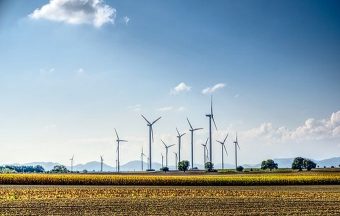
The first three months of 2018 saw record-breaking wind generation, according to new data released this week that underscores the increasing influence of renewable power in the UK electricity system.
Data from energy market monitoring firm EnAppSys shows wind farms in Britain set new half-hourly, daily, weekly, monthly and quarterly generation records over the last three months, with a total of 15.8TWh of wind energy generated through to the end of March.
The high yields propelled output from overall renewables to hit a record high of 25TWh, putting green power behind only gas as the largest generating source in Great Britain.
It continues a trend set during the final quarter of 2017, when wind and solar power generation overtook nuclear to become the UK’s second highest source of electricity for the first time ever.
“The performance of renewables highlights just how important this electricity source – and particularly wind – has become to Britain’s power mix,” said Paul Verrill, EnAppSys director. “With offshore wind farms a cheap and relatively uncontroversial source of power, levels of wind generation are expected to continue rising”.
In total gas provided 37.3 per cent of electricity in Q1 2018, followed by renewables at 29 per cent and nuclear at 18.1 per cent. Despite the cold snap dubbed the ‘Beast from the East’, coal-fired power stations delivered a record low of just 9.4 per cent of UK power, while 6.3 per cent came from electricity imports.
Verrill said wind generation will be boosted even further by the completion of the Western Link interconnector later this year. The cable will move power from Scotland into England, helping to ease constraints on output from Scottish wind farms, he said.
Data from WWF Scotland revealed last week that Scottish wind farms produced 44 per cent more power this last quarter compared to the same period last year.
“Much of the onshore wind farm capacity within Britain is based in Scotland but there are relatively limited levels of export capacity down into the rest of Britain through northern England,” Verrill explained. “The Western Link will move power from Scotland into England and this will reduce the likelihood of wind farms being paid to go offline due to transmission constraints.”
Source: businessgreen.com



